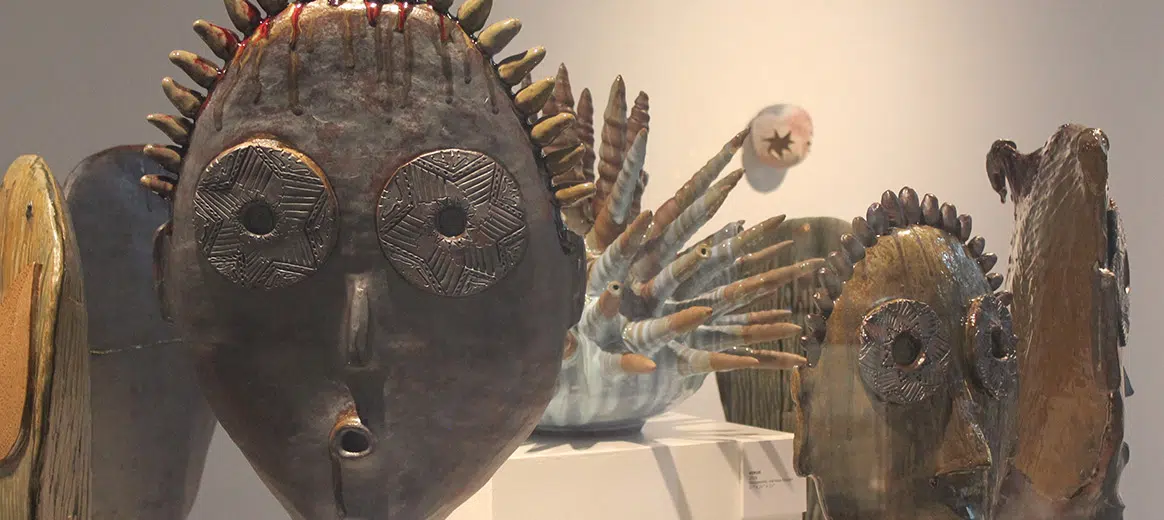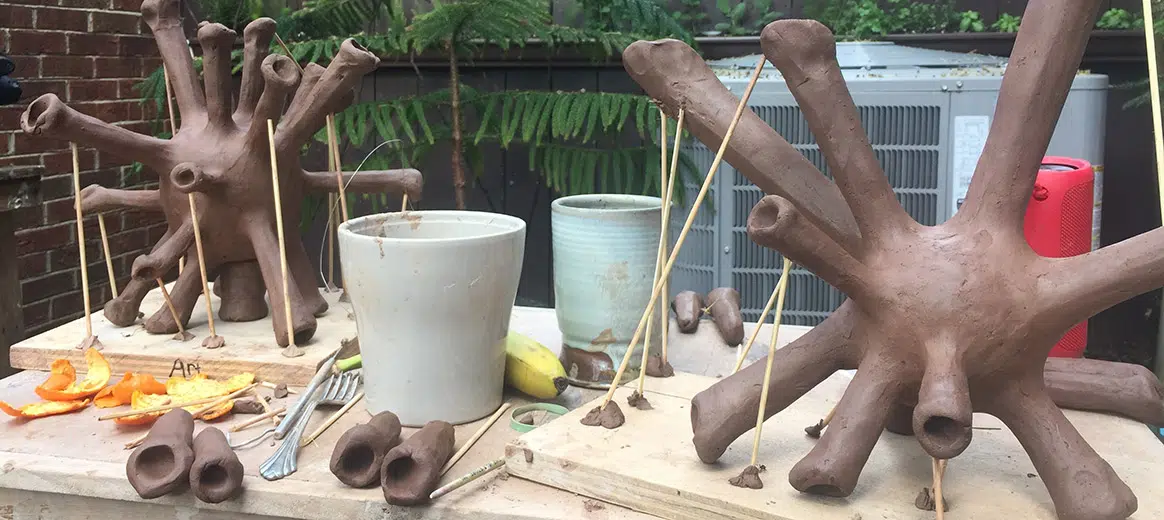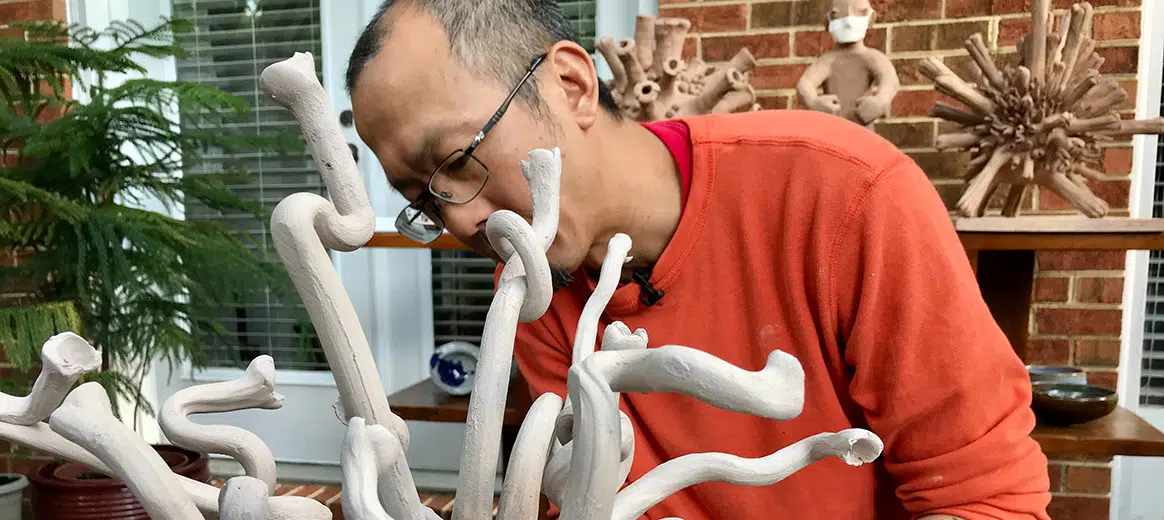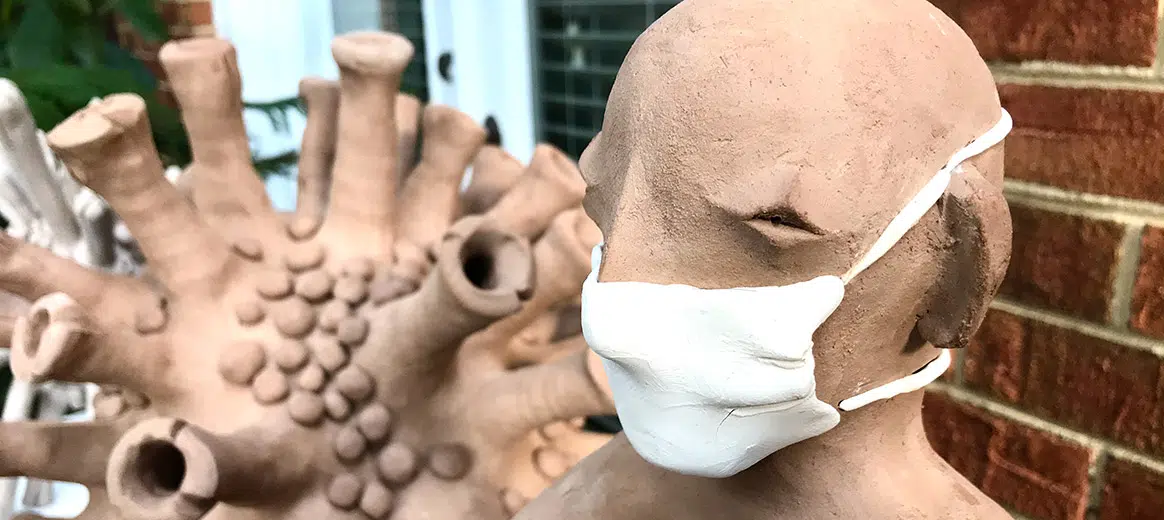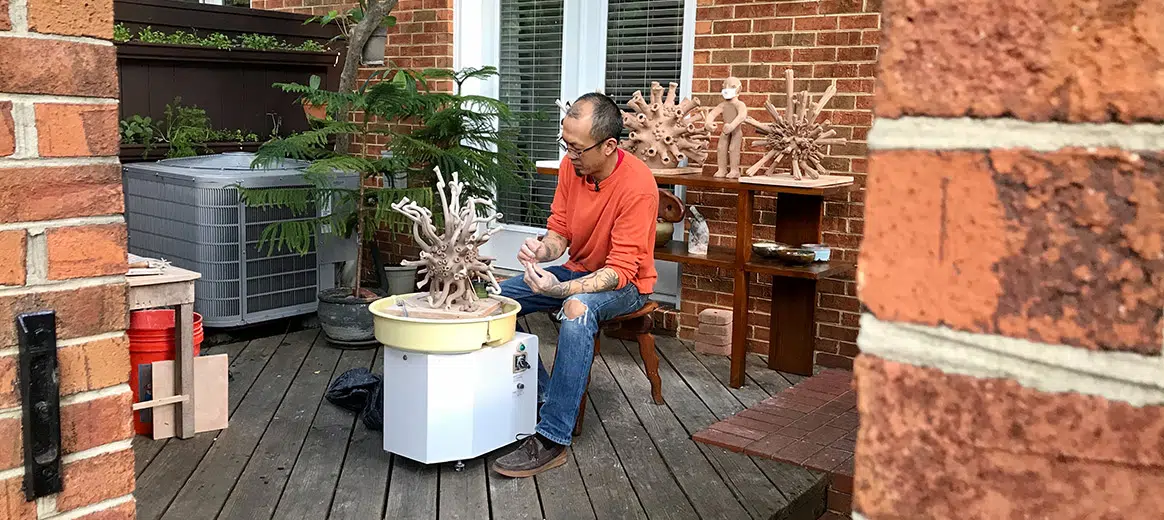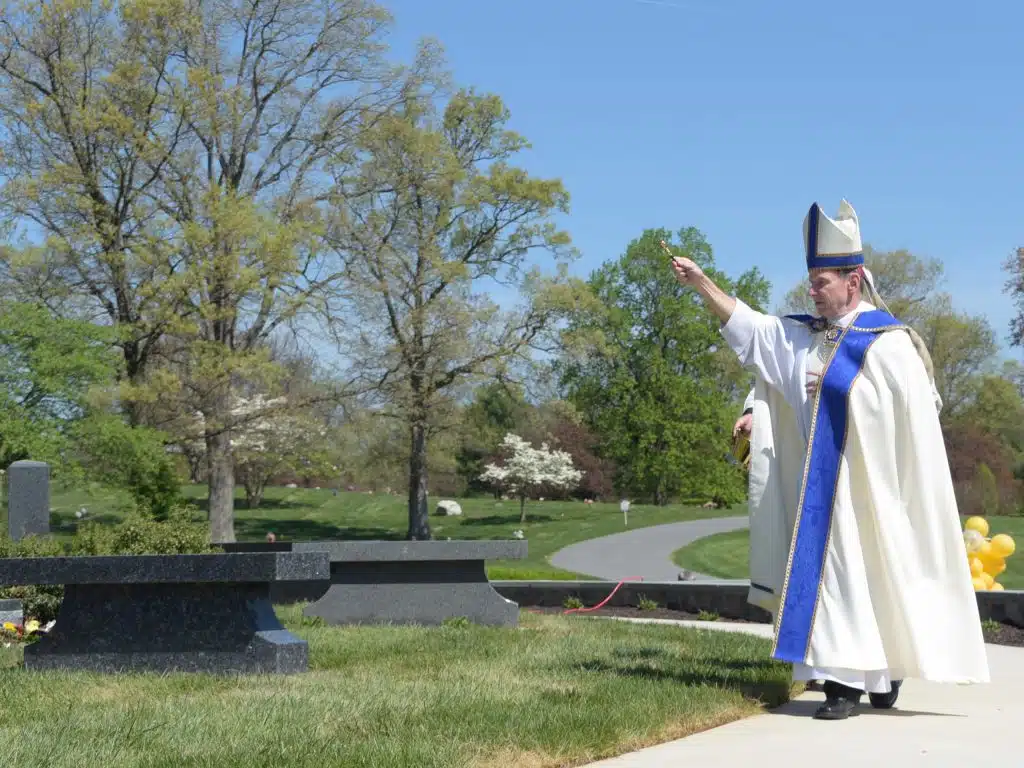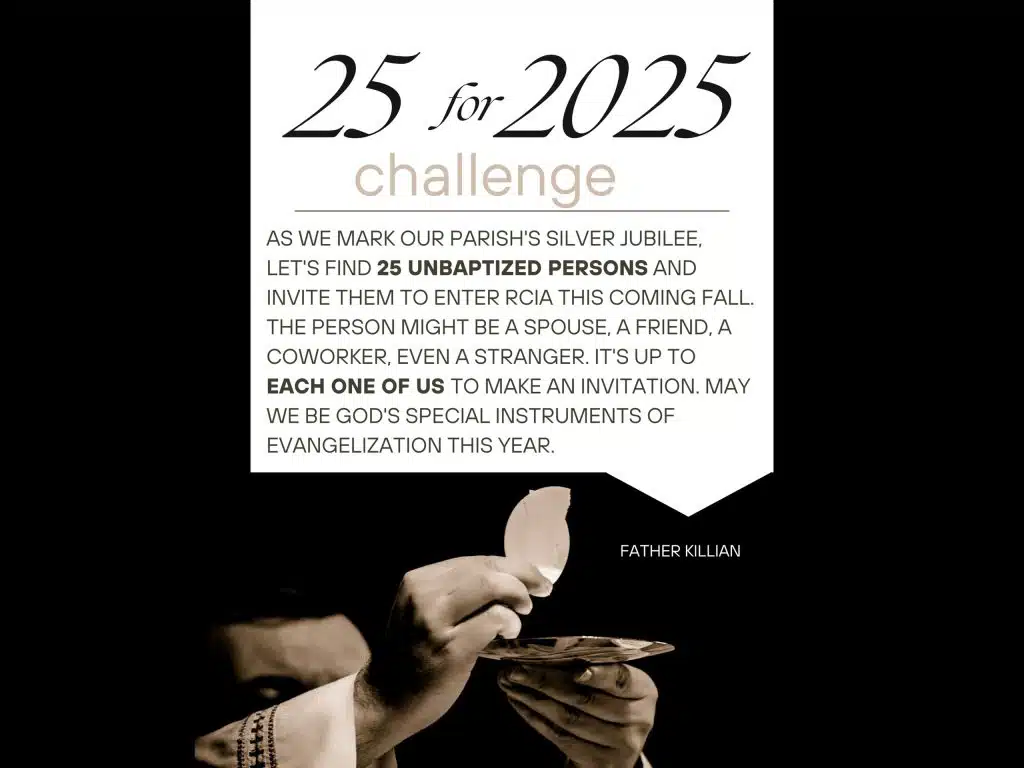The sculptures seem to be inspired by the latest breaking news
headlines. A figure in a stark white face mask. A giant virus cell mutating
into a tentacled sea creature that morphs back into a virus — or maybe it’s a
planet covered in protrusions that resemble nuclear smokestacks.
What makes the sculptures even more amazing — and prescient — is
that artist Hadrian Mendoza has been contemplating viruses for years. The
latest shapes, created in the past few months on his front porch in Arlington,
actually grew out of a solo exhibit four years ago in his native Philippines.
The centerpiece was a spiky model of “a virus, with seven figures
running away,” said Mendoza, 46, a ceramic artist, sculptor and full-time art
director at St. Thomas More Cathedral School in Arlington since 2017. He also
teaches on weekends at the Corcoran School of Art in Washington and at the
Workhouse Art Center in Lorton, and he’s won numerous international awards.
The 2016 exhibit depicted “no particular virus,” but a collector
from the Philippines remembered the show and recently commissioned a sculpture
of the new coronavirus. “Somehow that one commission turned into four,” Mendoza
said, and he created a series of eight pieces, each 12 to 18 inches tall. Four
are still available.
Mendoza’s original concept was to explore “how danger and beauty
can coexist — beautiful things can be dangerous too, and that intrigues me,” he
said. One example is the carnivorous Venus flytrap plant, featured in his earlier
pieces.
The current pandemic also seems to juxtapose danger and beauty — the danger of COVID-19 has allowed some, including Mendoza, the
silver lining of being able to spend more time at home with family — his wife and two daughters, now in eighth and
fifth grade at the cathedral school. He moved to the United States as a child, then
returned to the Philippines after college in search of his artistic roots. His
wife, who was a sculpture major at the University of the Philippines, and
daughters were born there as well.
The pandemic also has allowed Mendoza more studio time to work on
his art, which he usually only gets in the summer or during school breaks. “I’m
looking at the positives out of this whole situation,” he said.
Another positive is the meditative time spent working with his
hands as he creates the simple, repetitive shapes of the sculptures. “A spike
coming out of a sphere — multiply that into 38 spikes and it looks more
complicated, but in reality, it’s just one spike,” he says. “Repetition in art
can create this glorious image, a powerful sculpture.”
Creating the sculptures has been “a therapeutic process for me,”
he said. “It’s very hard to be grounded and have to stay at home,” but art
“eases some of those anxieties and kind of relaxes me.”
This is something he tries to teach his students as well. Being
in a relaxed state of mind positively affects “the way I interact with my kids,
my wife and my students at school. It heals me and allows me to think things
through and think how I can make things better.”
One idea that came to him while working on his porch was to have
each student in his art classes — now a
distance-learning elective that meets via Google Classroom — create a thank-you
card for the “frontliners,” his term for the doctors and nurses putting their
lives on the line every day to fight the pandemic and help patients. The cards
were distributed to health care workers “and they did reach a lot of people,”
Mendoza said. “They were thumbtacked to break-room walls in hospitals where doctors
and nurses could see them.”
His students also have learned about the history of the origami
crane, a Japanese symbol of healing and long life. “It was a good thing to
start with, and very appropriate to what we’re going through now,” he said.
His new sculptures are now being fired in Lorton — ceramics
require two firings, the first to harden the clay, then a second to add color
and a shiny glaze. He plans browns, dark reds and a touch of baby blue, which
will be added in August or September at a wood kiln in Maryland.
While this project is nearing completion, after spending so much
time studying and pondering the images of the coronavirus and watching it morph
in his mind, Mendoza doesn’t think he’s finished letting its mix of danger and
beauty inspire him quite yet.
“The shapes are still in me,” he said.
Find out more:
For more background and photos, go to
Hadrianmendozapottery.com
